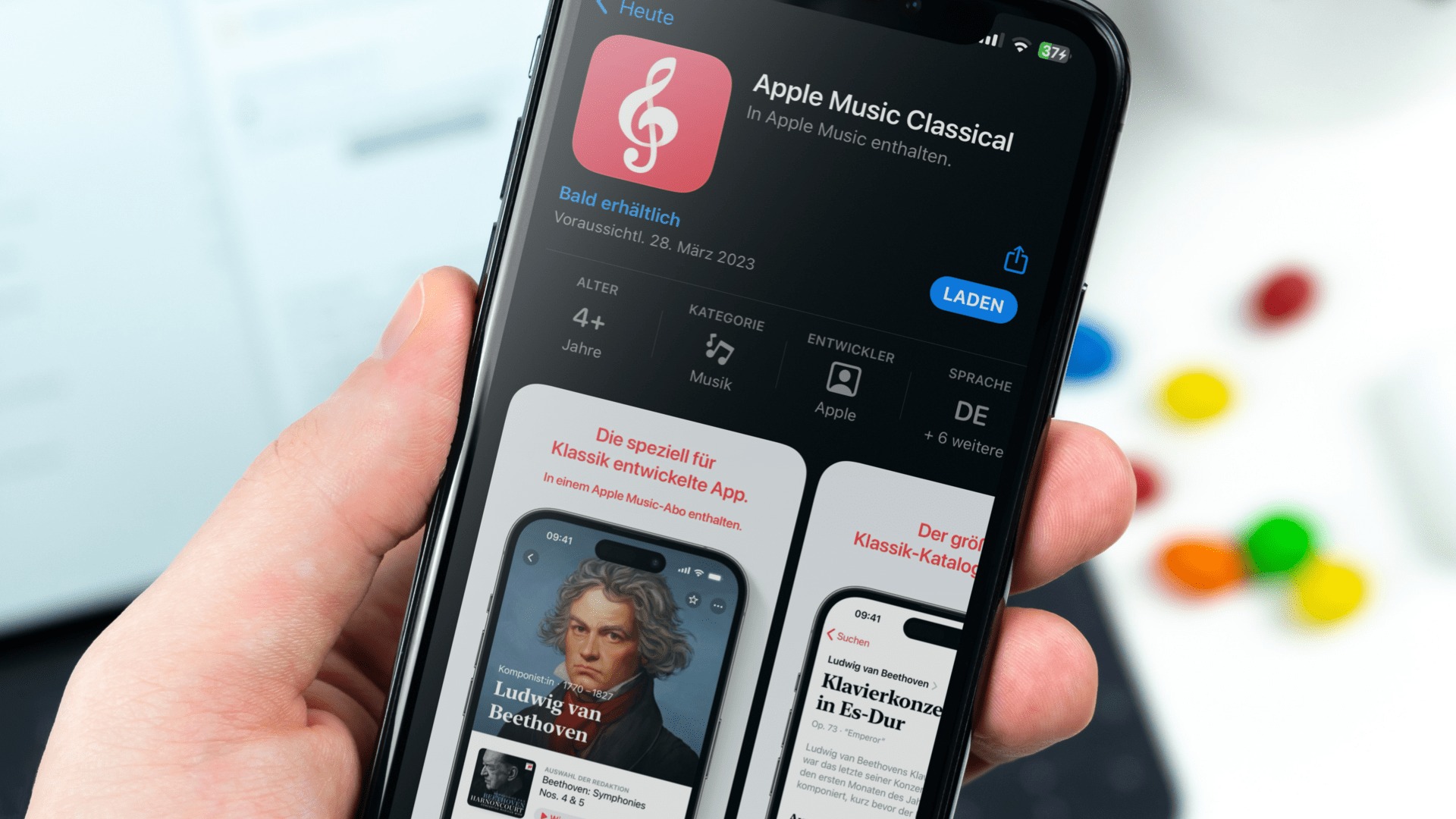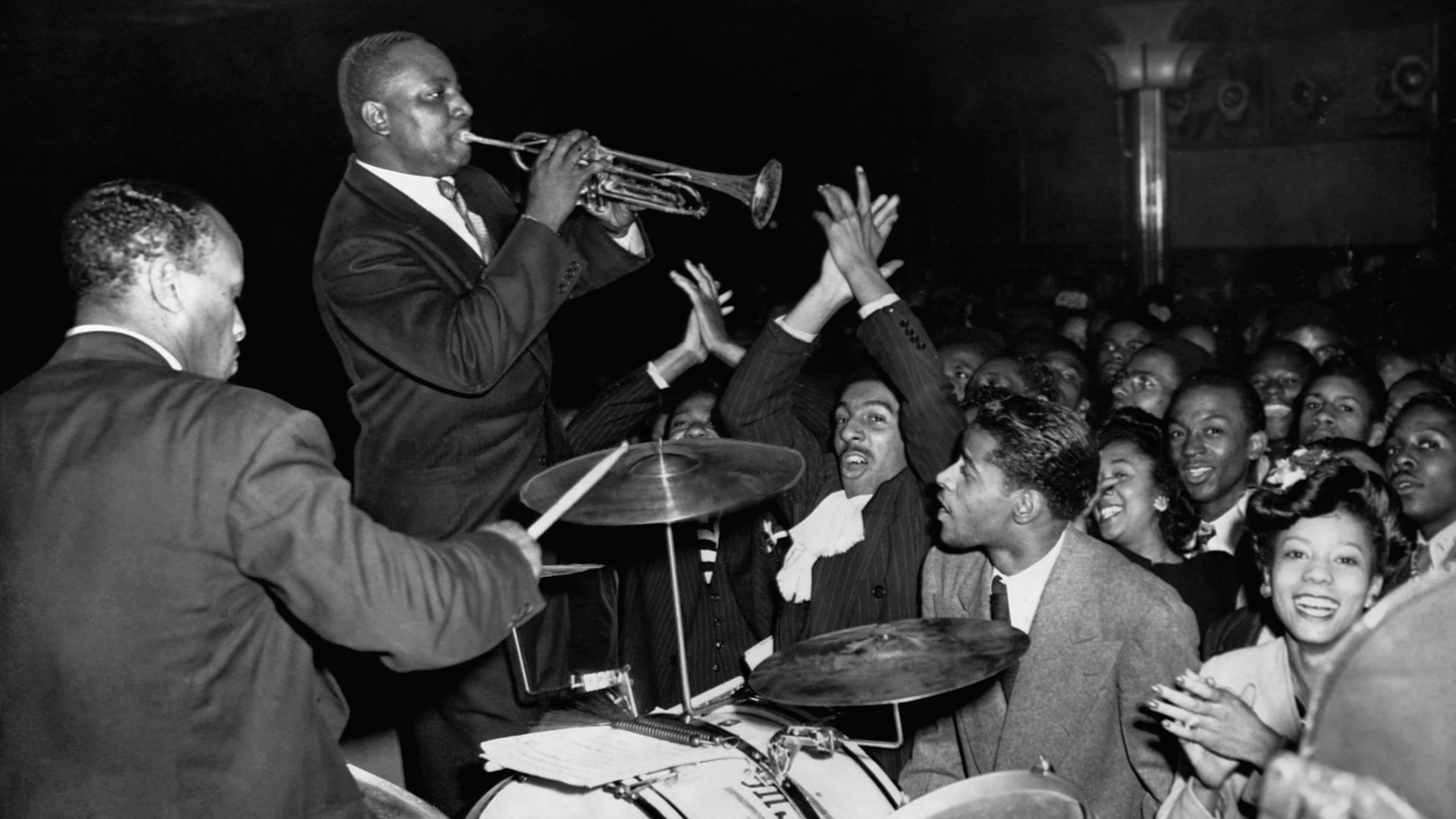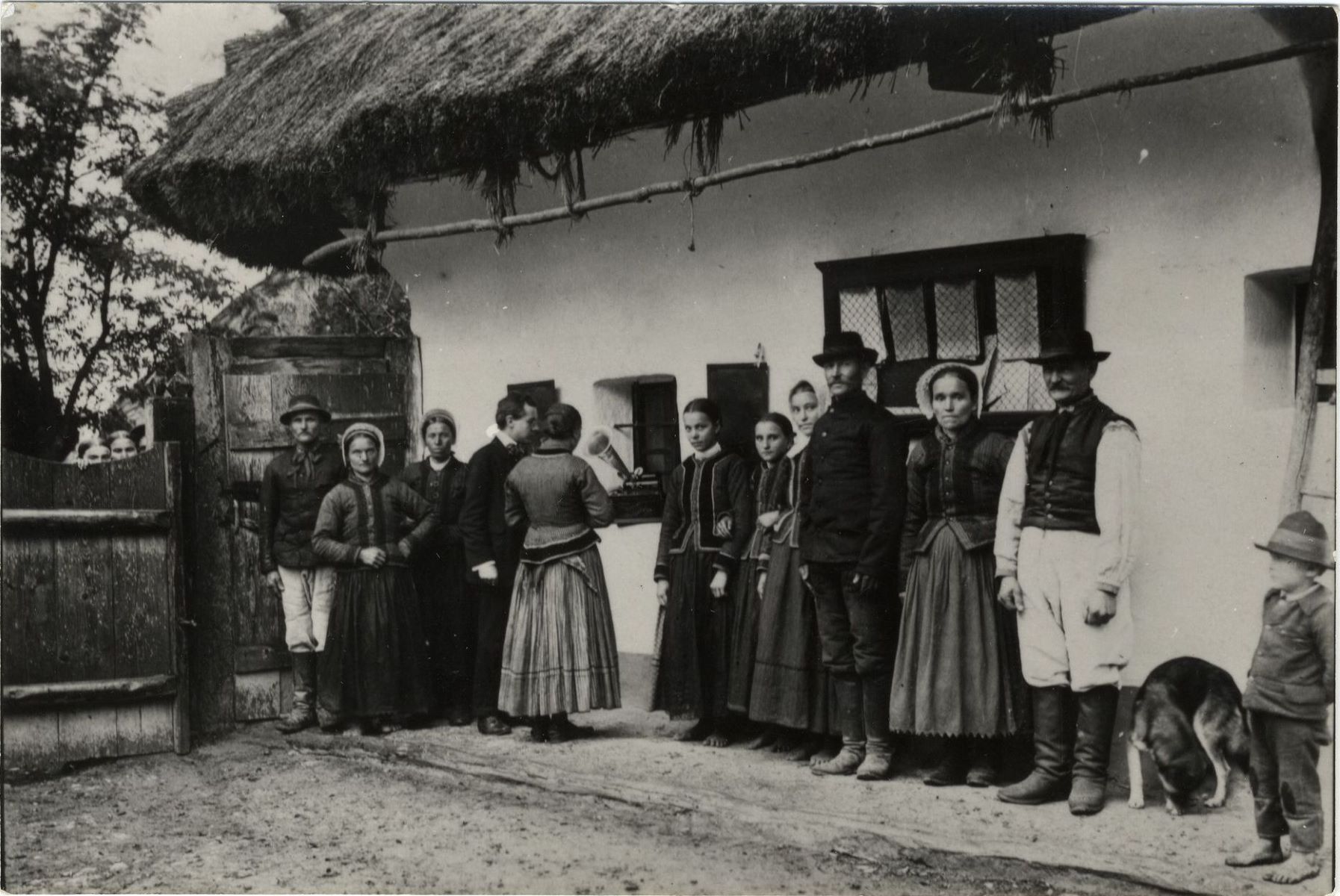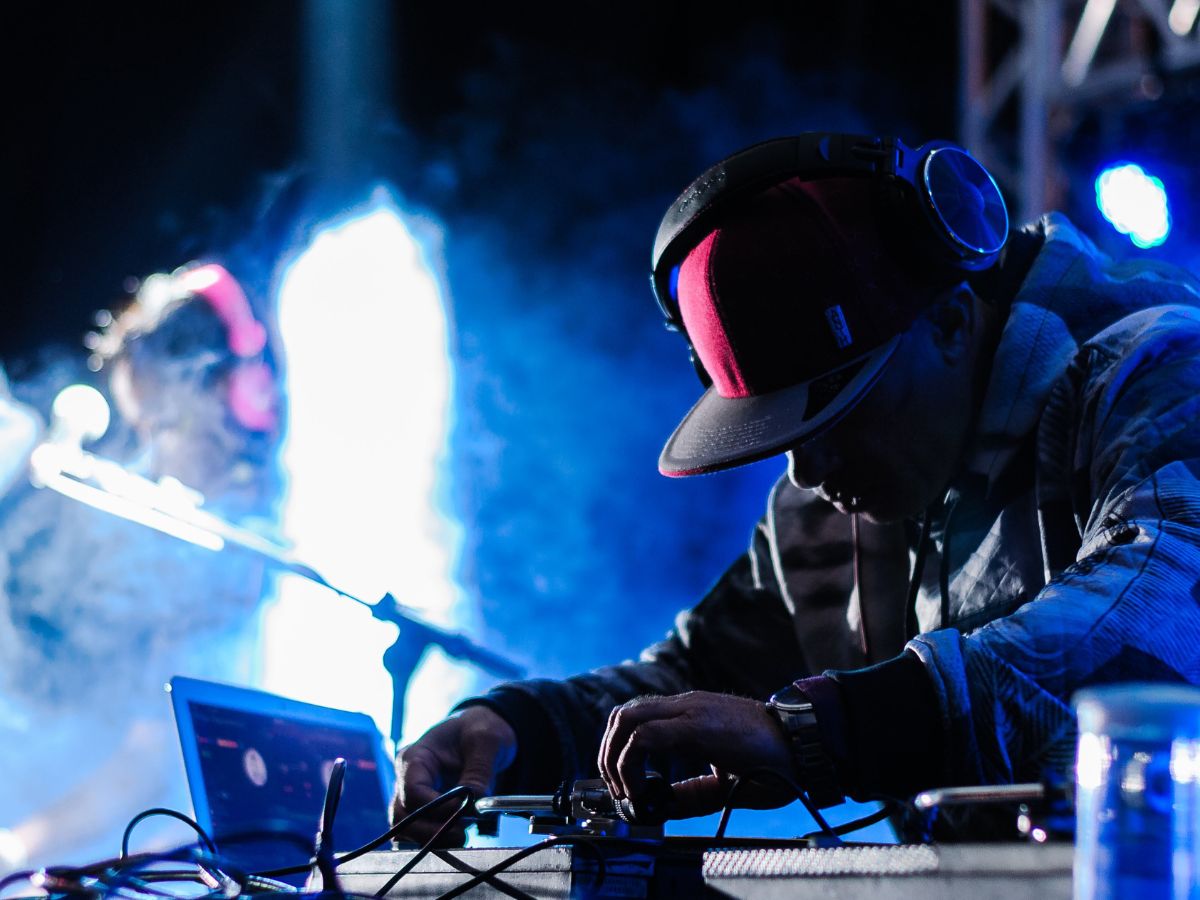

Classical
When Did Classical Music Start
Modified: March 11, 2024
Discover the origins of classical music and its rich history. Learn when classical music began and how it has evolved over the years.
(Many of the links in this article redirect to a specific reviewed product. Your purchase of these products through affiliate links helps to generate commission for AudioLover.com, at no extra cost. Learn more)
Table of Contents
Introduction
Classical music is a genre that has transcended time and captured the hearts of listeners throughout the centuries. Renowned for its complexity, beauty, and emotional depth, classical music has a rich history that stretches back thousands of years. From its ancient origins to its modern incarnations, classical music has evolved and adapted, leaving an indelible mark on the world of music.
The origins of classical music can be traced back to ancient civilizations such as ancient Egypt and Mesopotamia. In these early cultures, music was an integral part of religious rituals and ceremonies. Instruments such as the lyre and the harp were used to accompany songs and chants, creating a melodic and harmonious atmosphere.
As civilizations flourished and evolved, so too did the music. In ancient Greece, music began to take on a more structured form, with the development of scales and modes. The Greeks also introduced the concept of musical notation, which allowed for the preservation and dissemination of musical ideas.
Fast forward to the Renaissance period, and we see a significant shift in the development of classical music. This era, which spanned from the 14th to the 17th century, saw the emergence of polyphonic compositions and the rise of esteemed composers such as Palestrina and Monteverdi. The use of complex harmonies and intricate musical structures became prominent during this time.
The Baroque period, which followed the Renaissance, further expanded on the complexities of classical music. This era, dominated by composers like Bach, Handel, and Vivaldi, was characterized by its ornate and highly ornamented compositions. The use of fugues, concertos, and operas became increasingly popular, showcasing the virtuosity and technical prowess of the performers.
However, it was during the Classical era that the foundations of modern classical music were truly laid. This period, which spanned from 1750 to 1820, saw the emergence of composers such as Mozart, Haydn, and Beethoven. Their works emphasized clarity, balance, and symmetry, with a focus on formal structures such as sonatas and symphonies.
The Romantic period, which followed the Classical era, brought about a shift in the emotional and expressive qualities of classical music. Spanning from 1820 to 1900, this period was characterized by its intense emotions, dramatic gestures, and sweeping melodies. Composers like Chopin, Schubert, and Tchaikovsky used music to evoke profound emotional experiences, creating works that deeply resonated with audiences.
The 20th century marked a further evolution of classical music, with composers like Stravinsky, Schoenberg, and Bartok pushing the boundaries of traditional tonality and form. Experimentation, dissonance, and unconventional techniques became hallmarks of modern classical music. This period also witnessed the incorporation of electronic instruments and technology into classical compositions, further expanding the possibilities of sound.
As we enter the 21st century, classical music continues to evolve and adapt. Contemporary composers draw inspiration from a wide range of musical traditions, merging genres and styles to create innovative and thought-provoking compositions. Classical music remains a vital and cherished art form, enticing both seasoned enthusiasts and newcomers alike with its timeless beauty and emotional depth.
Ancient Origins of Classical Music
The origins of classical music can be traced back to ancient civilizations, where music played a significant role in religious rituals, ceremonies, and social gatherings. These ancient cultures, such as ancient Egypt, Mesopotamia, and ancient Greece, laid the groundwork for the development of classical music as we know it today.
In ancient Egypt, music was deeply intertwined with religious practices and beliefs. Egyptians believed that music had the power to connect humans with the divine and used it in their religious ceremonies and rituals. The music of ancient Egypt encompassed various instruments, including harps, flutes, and drums. It was often performed by professional musicians who held esteemed positions in society.
In Mesopotamia, which encompassed the region of present-day Iraq and parts of Syria and Turkey, music also held a prominent role in religious and cultural life. The Mesopotamians believed that music had the power to heal and uplift the soul. They developed a system of musical notation known as cuneiform, which allowed for the preservation of musical compositions on clay tablets.
Ancient Greece is another civilization that significantly contributed to the development of classical music. The Greeks believed that music was not only a form of art but also a fundamental part of education and a way to connect with the divine. They established the foundations of musical theory, with Pythagoras and his followers exploring the mathematical relationships between musical tones and intervals. The Greeks also introduced various musical instruments, including the lyre, kithara, and aulos.
Furthermore, ancient Greek plays, such as those by playwrights like Aeschylus, Sophocles, and Euripides, featured musical elements, combining music, dance, and drama into a cohesive performance. The music in these plays often evoked emotions, heightened the theatrical experience, and conveyed the narrative to the audience.
These ancient civilizations set the stage for the development of classical music by establishing musical systems, inventing musical instruments, and integrating music into various aspects of their cultures. The concepts and techniques developed during these times served as a foundation for later composers to build upon, shaping the evolution of classical music throughout the centuries.
Development of Early Classical Music
After its ancient origins, classical music continued to evolve and develop during the Middle Ages and the Renaissance. This period marked a significant shift in the approach to music, with the emergence of new musical forms, techniques, and styles.
During the Middle Ages (approximately 500-1400 AD), music was primarily composed and performed within the context of the Christian Church. Monks and nuns played a crucial role in the preservation and development of music during this time. Gregorian chant, also known as plainsong, was the dominant form of vocal music. It consisted of simple, unaccompanied melodies sung in Latin, designed to enhance the sacred atmosphere of the church.
As the Middle Ages progressed, polyphonic music, which features multiple melodic lines sung simultaneously, began to emerge. Composers, such as Hildegard von Bingen and Guillaume de Machaut, experimented with polyphony, adding complexity and richness to their compositions. The use of musical notation, developed during the ancient times, became increasingly important in preserving and sharing musical ideas.
The Renaissance period (approximately 1400-1600 AD) witnessed a flourishing of artistic creativity, and music was no exception. This era saw the rise of humanism, an intellectual movement that placed emphasis on the value of human achievements and the exploration of individual expression. As a result, composers began to write music that was more secular in nature, rather than solely focusing on religious themes.
Notable composers of the Renaissance include Giovanni Palestrina, Josquin des Prez, and Thomas Tallis. They composed choral music, madrigals, and motets, emphasizing harmony and expressive melodies. One of the defining characteristics of Renaissance music was its use of imitative polyphony, where different musical voices echo and imitate one another.
The printing press, invented by Johannes Gutenberg in the 15th century, played a crucial role in the dissemination of music during the Renaissance. Musical scores could now be reproduced in large quantities, allowing more people to have access to music and contributing to the spread of musical knowledge across Europe.
Overall, the development of early classical music in the Middle Ages and the Renaissance laid the foundation for the rich and diverse musical landscape that would follow. The exploration of polyphony, the incorporation of secular themes, and the advancements in musical notation all played a part in shaping the trajectory of classical music, preparing the ground for the subsequent eras of musical innovation.
Rise of the Baroque Period
The Baroque period, which spanned from the 17th to the early 18th century, was a time of artistic extravagance, grandeur, and ornate beauty. Baroque music is characterized by its complexity, emotional intensity, and intricate ornamentation. It marked a significant departure from the simplicity of Renaissance music and laid the foundation for the development of classical music as we know it today.
The Baroque period saw the emergence of celebrated composers who left a lasting impact on the world of classical music. Prominent figures such as Johann Sebastian Bach, George Frideric Handel, and Antonio Vivaldi were among those who defined the era with their musical genius.
One of the hallmarks of Baroque music was its emphasis on the basso continuo, also known as thoroughbass. This technique involved a bass line accompanied by figures indicating the harmonies to be played above it. It provided a foundation for the intricate melodies and harmonies that unfolded above it.
The use of complex and ornate embellishments became a defining characteristic of Baroque music. Composers utilized trills, turns, and intricate melodic lines to add emotional depth and expressiveness to their compositions. Ornamental techniques such as the use of ornaments, including mordents, trills, and grace notes, were applied to add flourishes and embellishments to the music.
Baroque music also featured a wide range of instrumentation. Orchestras became larger, featuring string, brass, woodwind, and percussion instruments. The harpsichord, a keyboard instrument, gained popularity and was often used as the continuo instrument in Baroque compositions.
Opera, which had originated in the late Renaissance, reached new heights during the Baroque period. Composers like Claudio Monteverdi and Henry Purcell pioneered the development of opera as a dramatic and highly expressive art form. Operas were spectacles that combined music, drama, and elaborate stage sets to evoke intense emotions in the audience.
Furthermore, the rise of the concerto during the Baroque period allowed instrumentalists to showcase their virtuosity. Composers, such as Antonio Vivaldi, wrote concertos for solo instruments accompanied by an orchestra, creating compositions that demonstrated technical brilliance and emotional depth.
Overall, the Baroque period represented a shift in the aesthetic and stylistic choices of classical music. It brought forth a new level of musical complexity, emotional depth, and ornate beauty. The influential composers and the rich compositions of the Baroque era laid the foundation for future developments in classical music and set the stage for the classical and romantic periods that followed.
The Classical Era: 1750-1820
The Classical era is often regarded as a golden age in the history of classical music. Spanning from 1750 to 1820, this period saw the rise of iconic composers such as Wolfgang Amadeus Mozart, Ludwig van Beethoven, and Joseph Haydn. It was a time of musical refinement, balance, and clarity, characterized by the exploration of formal structures and the establishment of new musical ideals.
During the Classical era, composers embraced the philosophy of the Enlightenment, which emphasized reason, logic, and order. This influence is reflected in the musical compositions of the time, which sought to strike a balance between emotional expression and intellectual clarity.
One of the key features of the Classical era was the development of the sonata form. Sonata form became the foundation for many instrumental compositions, particularly symphonies and sonatas. It consisted of three main sections: an exposition, a development, and a recapitulation. This structure allowed composers to explore contrasting themes, develop musical ideas, and create a sense of symmetry and cohesion.
Joseph Haydn, often referred to as the “Father of the Symphony,” made significant contributions to the genre during this era. He composed over 100 symphonies, each demonstrating a mastery of form, orchestration, and musical expression. Haydn’s works set a precedent for the symphony as a grand and comprehensive musical statement.
Wolfgang Amadeus Mozart, a child prodigy and a prolific composer, was one of the most influential figures of the Classical era. Mozart’s compositions showcased his genius for melody, intricate harmonies, and emotional depth. His symphonies, piano concertos, and operas remain some of the most beloved and frequently performed works in the classical repertoire.
Ludwig van Beethoven, although straddling the line between the Classical and Romantic eras, made a profound impact during the late Classical period. His compositions pushed the boundaries of form and expression, paving the way for the grandeur and intensity of the Romantic period. Beethoven’s symphonies, particularly his Fifth and Ninth, are considered masterpieces that exemplify the ideals of the Classical era.
Furthermore, the Classical era witnessed the formation of the classical chamber ensemble, with the string quartet as its centerpiece. Compositions for the string quartet, consisting of two violins, a viola, and a cello, showcased the artistry of individual instruments while maintaining balance and unity among the performers.
The piano, a relatively new instrument during the Classical era, gained popularity and underwent significant technological advancements. Composers explored the expressive possibilities of the piano, leading to the development of the classical piano sonata and the concerto.
Overall, the Classical era was a period of refinement and innovation in classical music. The compositions of Mozart, Haydn, and Beethoven exemplify the ideals of balance, clarity, and emotional depth. The Classical era set the stage for the musical innovations of the Romantic period, leaving an indelible mark on the history of classical music.
The Romantic Period: 1820-1900
The Romantic period, spanning from 1820 to 1900, was a time of artistic revolution and intense emotional expression in classical music. This era marked a departure from the restraint and formal structures of the Classical period, embracing individuality, imagination, and passion as key elements of musical compositions.
At the heart of the Romantic period was the belief in the power of music to convey powerful emotions and evoke intense feelings. Composers sought to express their innermost thoughts, dreams, and desires through their compositions, resulting in deeply personal and introspective works.
The orchestra played a central role in the Romantic period, reaching new levels of size and technical capabilities. Composers such as Richard Wagner and Gustav Mahler pushed the boundaries of orchestration, creating lush, expansive soundscapes and evocative musical textures. The symphony orchestra became a powerful vehicle for expressing a wide range of emotions.
Programmatic music also flourished during the Romantic period. Composers like Hector Berlioz and Franz Liszt sought to tell stories or depict scenes through their music. Symphonic poems and tone poems became popular forms, with each piece presenting a narrative or an evocative idea, often accompanied by descriptive titles or program notes.
The piano continued to be a prominent instrument during the Romantic period. Virtuoso pianists such as Frédéric Chopin and Franz Liszt dazzled audiences with their technical prowess and expressive playing. Piano compositions reflected a new level of emotion and poeticism, with composers exploring the full range of the instrument’s capabilities.
Operas of the Romantic period underwent significant transformations. Composers like Giuseppe Verdi and Richard Wagner introduced innovative approaches to storytelling, paving the way for operas that explored complex characters, dramatic narratives, and intricate musical motifs. The themes of love, passion, and fate took center stage in many operatic works.
The Romantic period also saw the rise of nationalism in classical music. Composers sought to incorporate folk melodies, nationalistic themes, and cultural influences from their own countries into their compositions. This emphasis on national identity and pride resulted in unique musical expressions and distinctive national styles.
Composers like Johannes Brahms and Antonín Dvořák sought to bridge the gap between the Romantic and Classical eras, infusing their compositions with a sense of emotional depth and structural complexity reminiscent of the Classical masters.
Overall, the Romantic period was a time of profound artistic expression, pushing the boundaries of musical creativity and emotional intensity. It laid the groundwork for future musical developments and paved the way for the diverse range of styles and genres that emerged in the 20th century.
Modern Classical Music: 20th Century and Beyond
The 20th century brought about a revolution in classical music, leading to the emergence of modern classical music. Composers of this era sought to break free from traditional conventions, experimenting with new sounds, forms, and techniques. This period witnessed a diverse range of styles and genres, creating a dynamic and ever-evolving landscape of classical music.
One significant development in modern classical music was the exploration of atonality and the rejection of traditional tonal systems. Composers like Arnold Schoenberg and his disciples of the Second Viennese School embraced dissonance and explored new ways of organizing pitch, leading to the creation of twelve-tone and serial music. These new approaches emphasized the equality of all twelve notes in the chromatic scale, challenging traditional notions of harmony and tonality.
Electronic music also emerged as a prominent force in the 20th century. Composers like Karlheinz Stockhausen and Pierre Schaeffer pushed the boundaries of sound production, utilizing electronic instruments, tape manipulation, and computer-generated sounds. This marked a significant departure from acoustic instruments and opened up a new realm of sonic possibilities.
Minimalism, characterized by repetitive patterns and gradual changes, gained popularity in the late 20th century. Composers such as Steve Reich and Philip Glass embraced the simplicity and repetition of motifs, creating hypnotic and mesmerizing compositions. Minimalist music found its way into not only classical concert halls but also film scores and popular music genres.
Avant-garde and experimental music also flourished in the 20th century. Composers like John Cage challenged traditional notions of music by incorporating chance elements, environmental sounds, and unconventional performance techniques. These experimental approaches shifted the focus from the composer as a sole creator to the performer and the listener as active participants in the musical experience.
The globalization of classical music also became more apparent in the 20th century. Composers drew inspiration from diverse musical traditions around the world, merging different styles and cultural influences. This fusion of musical elements from various cultures resulted in works that reflected the increasingly interconnected world and expanded the possibilities of classical music.
Furthermore, film music played a significant role in shaping modern classical music. Composers like Bernard Herrmann, John Williams, and Hans Zimmer revolutionized the way music was used in movies, utilizing orchestral scores to heighten the emotional impact of the storytelling. Film scores became recognized works of art in their own right, reaching a wide audience and introducing classical music to new generations.
In the 21st century, the exploration and integration of technology continue to shape modern classical music. Composers utilize computer-generated sounds, live electronics, and interactive technologies to create immersive and innovative musical experiences. The accessibility of digital platforms has also opened up new avenues for the dissemination of classical music, reaching a global audience like never before.
Modern classical music is characterized by its diversity, experimentation, and boundary-pushing nature. Composers continue to challenge established norms and explore new sonic frontiers, creating a vibrant and ever-evolving landscape of classical music in the 21st century and beyond.
Conclusion
Classical music has a rich and storied history that spans centuries, from its ancient origins to the modern era. It has evolved and adapted, and each period has brought unique styles, techniques, and contributions to the genre. From the ancient civilizations of Egypt and Mesopotamia to the refined compositions of the Classical period, the emotional depth of the Romantic era, and the experimentation of modern classical music, the genre has shown a remarkable ability to transcend time and resonate with audiences across generations.
Through the centuries, classical music has touched the souls of listeners, evoking profound emotions and providing a means of expression for composers to convey their innermost thoughts and feelings. It has not only served as a form of entertainment but also as a reflection of the cultural and historical contexts in which it was created.
Classical music has gone through significant transformations, from the early days when religious rituals and ceremonies shaped its beginnings to the development of complex forms and harmonies during the Baroque period. The Classical era brought balance and clarity, while the Romantic period delved into intense emotional expression. The 20th century witnessed a revolution in the form of modern classical music, exploring new sounds, techniques, and ideologies.
Classical music continues to evolve in the 21st century, embracing technological advancements and incorporating a wide range of influences from different musical traditions. It remains a fundamental pillar of artistic expression, captivating both seasoned enthusiasts and newcomers with its timeless beauty, complexity, and ability to evoke deep emotions.
As we reflect on the journey of classical music, it becomes clear that its enduring popularity and relevance lie in its ability to connect with the human experience. It transcends language and cultural barriers, speaking directly to our hearts and minds. Whether listened to in a grand concert hall, experienced through film, or enjoyed on a personal device, classical music continues to inspire, provoke, and move us.
So, let us celebrate the rich heritage of classical music and embrace its ongoing evolution. Let us appreciate the contributions of the composers who have shaped its history and eagerly anticipate the new voices that will carry it forward. Classical music is a treasure, a source of solace, and a conduit for the deepest of human emotions. It is a testament to the power of creativity and the enduring impact of artistic expression throughout the ages.











